Binh Thuy Temple is a familiar spiritual destination for Can Tho and a captivating spot for numerous tourists due to its unique 1-0-2 architecture.
The temple is a masterpiece that embodies the cultural essence of the lush Can Tho delta and the entire Southwestern region. Anyone traveling to Can Tho is eager to visit this temple to admire its ancient artistic architecture and delve into this sacred place’s history and formation process.
1. Introduction to Binh Thuy Temple in Can Tho
1.1. Where is Binh Thuy Temple?
Address: 46/11A Le Hong Phong Street, Binh Thuy District, Can Tho City
Ticket price: Free
Opening hours: 7:30 AM – 10:30 AM | 1:30 PM – 5:30 PM, every day of the week
Binh Thuy Temple, a popular tourist destination in Can Tho, is conveniently located just 6 km from the city center. Alongside Ong Pagoda in Can Tho, Binh Thuy Temple is a favorite coordinate for many tourists exploring the Western Capital.
This architectural marvel incorporates essential Feng Shui elements:
- To the East, it borders the Binh Thuy canal.
- To the West, it faces residential areas.
- To the South, it fronts Le Hong Phong Street, the route leading to the city center.
- To the North, it overlooks the Hau River.
Notably, across the temple is the path leading to the ancient Binh Thuy House – a popular attraction for tourists visiting Can Tho.
1.2. Discovering the history of Binh Thuy Temple in Can Tho
This historical site in Can Tho was constructed in 1844 in Binh Hung village, Dinh Thoi commune, Vinh Dinh district, Ba Xuyen province (now Binh Thuy Ward – Binh Thuy District – Can Tho City).
1852, during a boat trip, official Huynh Man Dat unexpectedly encountered a fierce storm, but he remained safe thanks to seeking refuge in Binh Hung. After escaping the danger, he organized a celebration and renamed the land “Binh Thuy,” meaning “calm water flow.” From then on, locals referred to the temple as Binh Thuy Temple.
In 1853, the villagers collectively contributed to renovating the temple, enhancing its elegance with brick walls, red-tiled roofs, sturdy wood structures, and a martial arts hall for significant festivals.
Fifty-one years later, at the beginning of 1904, noticing signs of deterioration, Governor Nguyen Duc Nhuan initiated reconstruction. Unfortunately, the governor passed away before the completion, temporarily halting the renovation. It wasn’t until 1909 that the new temple’s construction resumed, officially completed in 1910.
Binh Thuy village was renamed “Long Tuyen” – a lying dragon during this period. Consequently, the temple is also known by another name, Long Tuyen Ancient Temple or Long Tuyen Temple.
2. Directions to Binh Thuy Temple in Can Tho
Based on the Can Tho tourist map, to reach Binh Thuy Temple, travelers start from the city center, follow Nguyen Trai Street, pass through Cach Mang Thang Tam Street, and then head to Binh Thuy Bridge. Looking to the right (eastward) will lead you to Binh Thuy Temple (situated right under Binh Thuy Bridge).
3. Who is worshiped at Binh Thuy Temple?
Binh Thuy Temple has become a spiritual destination for the people of Binh Thuy and Can Tho. When visiting, tourists can pray for peace and health and honor the contributions of national heroes.
In addition to honoring the Deity Emperor Bon Canh, the temple also pays tribute to the tiger deity. Inside the temple are statues and memorial plaques for national heroes in Vietnam, such as Ho Chi Minh, Tran Hung Dao, Nguyen Trai, Dinh Cong Trang, Bui Huu Nghia, Nguyen Trung Truc, and others. Furthermore, the temple also features altars dedicated to the forest deity, the deity of canal construction and the God of Agriculture.
4. Explore the unique architecture of Binh Thuy Temple
Visiting Binh Thuy Temple is ideal for a one-day trip to Can Tho. The architectural beauty, rich in the characteristics of the Southwestern region, is most vividly portrayed when exploring Binh Thuy Temple. For those keen on temple architecture, the distinctiveness of Binh Thuy Temple compared to northern temples will surely be noticeable.
The structure is a convergence of the traditional architectural values of the ethnic groups during the Southern land reclamation period, combined with Chinese culture. With an area of up to 4000m2, the temple is purposefully designed to provide a fresh experience for visitors, avoiding a rigid layout.
Outside the temple:
Regarding decoration, looking towards the temple’s roof, the main hall and the rear hall are designed with “upstairs and downstairs verandas,” featuring overlapping roofs, appearing elegant and artistic. Additionally, on the temple’s roof are sculptures depicting fish transforming into dragons, mythical unicorns, and human figures. To the left of the temple’s roof is a decorative scroll – a design concept quite similar to northern temple roofs. Adjacent to this are flower vases and baskets of peach blossoms, with the lower edge of the tile roof adorned with white mango leaf patterns. The front of the house features cement columns decorated with intricate leaf patterns, creating impressive highlights for visitors.
Inside the temple:
In the middle of the courtyard is an altar dedicated to Nghi Trung and Nghi Ha. The central hall houses the main altar, with the left side dedicated to the Spirit of the Kitchen, and behind that is the Posterior Hall. On the right side, opposite the central hall, are altars for the Spirit of the Front and the Spiritual Guardian. Against the back wall in the middle is the altar for the Spirit of the Rear, with altars on both sides for the Left and Right Assistant. Two large shrines are dedicated to the Tiger Deity and the God of Agriculture outside the temple.
Although Binh Thuy Temple was constructed in the early 20th century, its architecture preserves the essence of the nation’s tradition. The decorative patterns and carvings showcase a delicate and vibrant touch.
This is not only a place preserving the cultural values of the Mekong Delta but also a reminder of ancestral traditions. Along with various cultural activities and events, Binh Thuy Temple has established its unique identity, becoming a source of pride for the local people.
5. Binh Thuy Temple Festivals in Can Tho
Visiting Binh Thuy Temple not only allows tourists to admire its unique and unfamiliar architecture but also allows them to immerse themselves in the festive atmosphere held here annually. Every year, Binh Thuy Temple hosts two major festivals:
- Ky Yen Festival at Binh Thuy Upper Temple: Held from the 12th to the 14th of the lunar month, this festival is dedicated to worshiping the Deity Emperor Bon Canh Thanh Hoa – the guardian deity of the land. The event includes various rituals such as ceremonies, prayers, offerings to the god, and traditional opera performances.
- Ky Yen Festival at Binh Thuy Lower Temple: From the 14th to the 15th of the 12th lunar month, this festival sees active participation from locals and visitors alike. Alongside the rituals and worship, the festival features numerous customs and traditional games, including folk singing, traditional opera, releasing ducks, tug-of-war, and cooking competitions.
In addition to Binh Thuy Temple, Can Tho boast many other tourist destinations and landmarks worth visiting, such as Ninh Kieu Wharf, Cai Rang Floating Market, My Khanh Can Tho Tourist Area, Con Son Can Tho Tourist Area and more.
Binh Thuy Temple in Can Tho is a captivating destination that blends spiritual significance with architectural marvel. As you explore its unique design, immersed in the festive air of its annual celebrations, you’ll discover the rich cultural tapestry that makes this temple an icon in the heart of the Mekong Delta. Binh Thuy Temple serves as a place of worship and stands as a testament to the deep-rooted traditions and spiritual essence of Vietnam’s Southwest. For a detailed guide and more insights into this cultural gem, Vietnampeace.com offers an invaluable resource, ensuring your journey to Binh Thuy Temple is both enriching and unforgettable. Plan your visit, delve into the enchanting history, and experience the vibrant celebrations at Binh Thuy Temple, a true jewel in the tapestry of Vietnam’s cultural heritage.
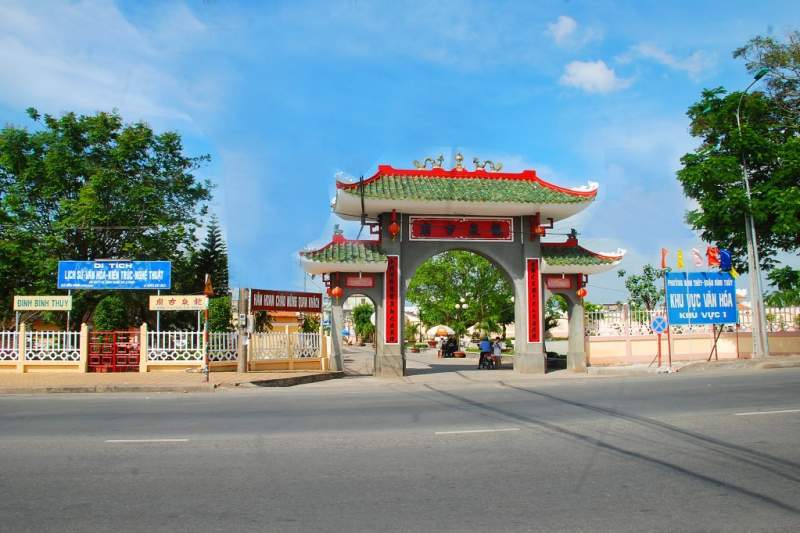
From the outside, look at Binh Thuy Temple in Can Tho (Image: Collection)
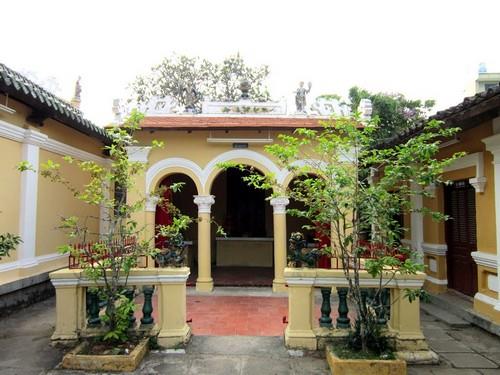
The inner area of Binh Thuy Can Tho communal house (Photo: Collection)
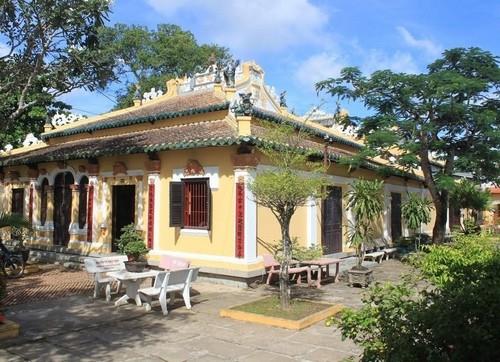
A peaceful setting with a breath of Southwestern breath (Image: Collection)
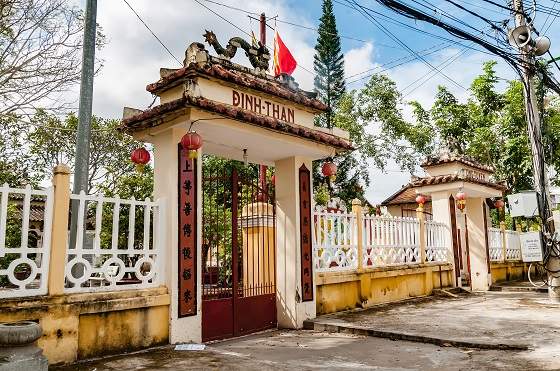
The exterior architecture of Binh Thuy communal house (Image: Collection)
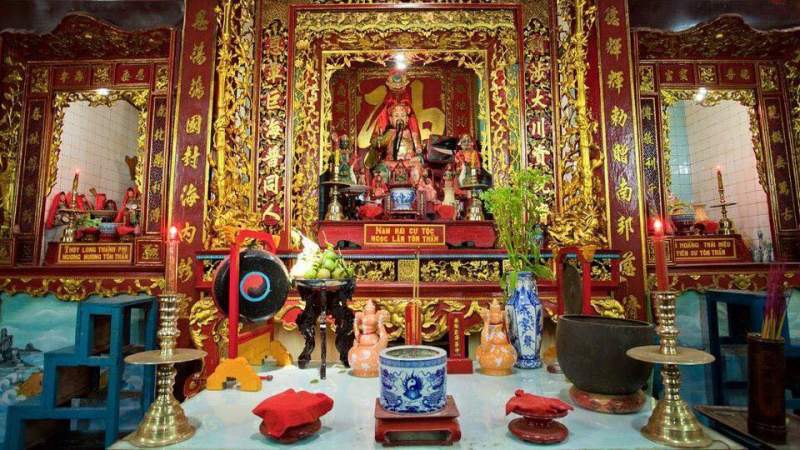
The altar of Binh Thuy temple in Can Tho (Image: Collection)
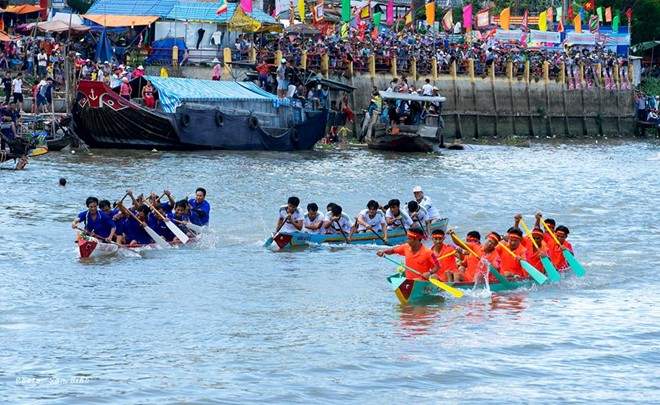
Many activities take place at the Binh Thuy communal festival (Image: Collection)
